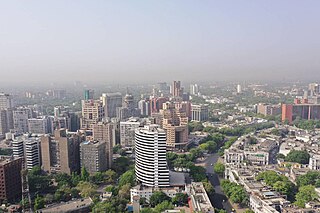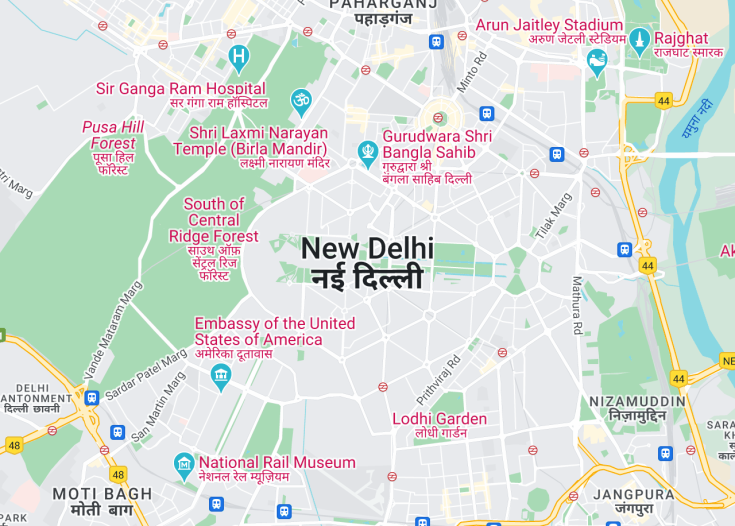New Delhi, the capital city of India, stands as a symbol of the country’s rich history and thriving present. This vast metropolis combines ancient monuments with modern governmental edifices, embodying India’s cultural diversity and political heritage. Visitors to New Delhi are treated to an array of breathtaking sites, including the magnificent Rashtrapati Bhavan, the serene Rajpath, and the bustling streets of Chandni Chowk. The city not only offers historical insights but also serves as a hub for major national celebrations and international diplomacy.
When visiting New Delhi, make sure to explore its street food culture, especially in areas like Old Delhi, to enjoy authentic local flavors.
Plan your visit during the cooler months, from October to March, to avoid the extreme summer heat and enjoy New Delhi’s outdoor attractions comfortably.
Top things to do & see in New Delhi
Select the following sights and activities to discover best tickets and tours available in New Delhi.
New Delhi: A Mosaic of Heritage and Modernity
| Country | India |
| Time in New Delhi | GMT+5:30 |
| Language spoken | Hindi |
| Population | 31,000,000 (United Nations, 2023) |
| Currency | Indian Rupee (₹, INR) |
| Airports |
|
New Delhi, the capital city of India, is a sprawling metropolis that embodies the ancient and the new. As the administrative and political hub of India, New Delhi hosts numerous national monuments, museums, and cultural institutions. The city’s landscape is marked by stark contrasts: beautiful historic sites such as the India Gate and Red Fort stand amidst chic urban developments reflecting modern architectural trends. Apart from being a pivotal seat of power, New Delhi is known for its vibrant cultural festivals, diverse cuisine, and bustling markets. The city hosts vibrant Diwali celebrations, the captivating magic of Holi, and numerous other festivals echoing India’s myriad traditions. Educational institutions, from primary to tertiary level, are globally recognized for their academic standards. In recent years, New Delhi has also seen significant infrastructural growth, enhancing connectivity and promoting ease of living for a burgeoning population. Despite challenges like pollution and congestion, the city continues to progress with several green initiatives and modern transport solutions. This ongoing evolution makes New Delhi a fascinating case study of an ancient city transitioning into a modern urban ecosystem.
Where is New Delhi?
New Delhi is located in the northern part of India, serving as the capital of the country. It is positioned within the larger metropolis of Delhi, adjacent to the Yamuna River.
Distances:
| Route | Distance by car | Time by car |
|---|---|---|
| Jaipur to New Delhi | 166 miles | 4 hours |
| Agra to New Delhi | 137 miles | 3 hours 30 minutes |
| Chandigarh to New Delhi | 155 miles | 4 hours 15 minutes |
What is New Delhi famous for?
New Delhi is renowned for being the political heart of India with iconic structures like the Parliament House and Rashtrapati Bhavan. Its rich history, bustling markets like Chandni Chowk, and diverse culinary landscape also draw numerous visitors annually.
History
Prehistoric Period to 3000 BCE
The area now known as New Delhi has been inhabited since the Stone Age, as evidenced by archaeological findings at sites like Anangpur and the surrounding Delhi region. These early inhabitants were part of one of the many cultural precincts of the Indus Valley Civilization.
3000 BCE – 5th Century AD
Moving through the centuries, the region saw a series of dynastic rules starting from the Maurya Empire to the Gupta Empire. Notably, during the rule of these empires, the region experienced significant advances in culture, arts, and architecture, laying foundational elements for future developments in what would eventually become New Delhi.
5th Century – 12th Century
The early medieval period marked the emergence of Delhi as a significant political and cultural hub in North India, influenced heavily by the Rajput kings before the Islamic invasions. This period was characterized by the construction of various forts and palaces, setting the stage for the rich architectural heritage that New Delhi is known for today.
12th Century – 16th Century
The Delhi Sultanate period which started in the 12th century brought significant Muslim influence to the region. The succession of five dynasties during this period saw the construction of several iconic structures, including the Qutub Minar. The city was a centerpiece of arts, learning, and architecture during this era.
16th Century – 19th Century
The Mughal Empire further enhanced New Delhi’s status and beauty with constructions like the Red Fort and Humayun’s Tomb. The city experienced flourishing trade and culture under the Mughal rule, which continued until the British colonization in the mid-19th century.
20th Century – Present Day
The 20th century marked the emergence of New Delhi as the capital of modern India. Designed by British architects Sir Edwin Lutyens and Sir Herbert Baker, the city was officially inaugurated as the capital in 1931. Since India’s independence in 1947, New Delhi has continued to grow as a center of political activity, cultural exchange, and economic development, showcasing a blend of ancient heritage and modern advancements.
Visit New Delhi
What to see and do in New Delhi, India
- Historic Sites: Explore the Red Fort, Qutub Minar, and Humayun’s Tomb.
- Museums: Visit the National Museum and the Gandhi Smriti.
- Shopping and Cuisine: Experience vibrant bazaars like Chandni Chowk and savor local dishes.
- Parks and Gardens: Relax in the Lodhi Gardens or visit the Delhi Zoo.
Festivals and Events in New Delhi
New Delhi hosts several cultural and religious festivals throughout the year. Major events include the Republic Day Parade on January 26th, the colorful festival of Holi in March, and Diwali, the Festival of Lights, celebrated in October or November.
Best time to visit New Delhi
The best time to visit New Delhi is during the cooler months from October to March when the weather is more pleasant, making it ideal for sightseeing and outdoor activities.
Is New Delhi worth visiting?
New Delhi is undoubtedly worth visiting for its rich tapestry of history, culture, and architecture. From ancient monuments and forts that whisper tales of bygone eras to vibrant markets and local cuisine, the city offers a unique blend of the old and the new. It serves as a living museum that not only educates but also fascinates visitors from around the world.









